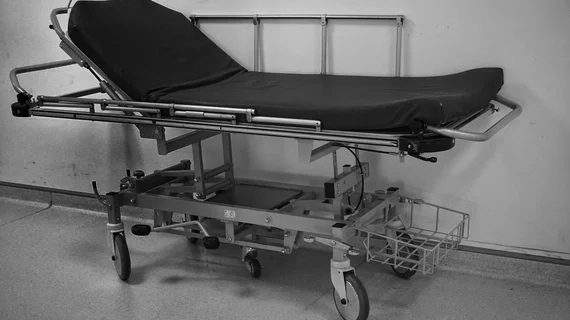Emergency CT scans, specialist consultations drive ‘diagnostic cascade’ of needless care
The more emergency physicians order imaging and consult with specialists, the more likely they are to spur a “diagnostic cascade” of medical testing that ultimately proves unnecessary. Further, patients imaged with CT as part of an initial emergency workup are highly likely to be admitted.
That’s according to researchers at the University of Haifa in Israel who reviewed cases spanning a three-year period at their institution, 1,000-bed Rambam Health Care Campus, as well as at 22 hospitals across the country.
The American Journal of Emergency Medicine published the study online Dec. 28.
Lead author Mor Saban and colleagues found specialist consultations at their ED rose 14 percent between 2014 and 2017, from 117,109 to 149,724. They also found CT scans across all indications, including whole-body CT for trauma, rose 5 percent.
Interestingly, the number of x-rays dropped significantly, by 11 percent, during the same period. Ultrasound counts remained steady.
The team also found a strong positive correlation between CT scans ordered in their ER and hospitalization rates.
In their analysis of associations at the national level, Saban and colleagues found that patients who spent more than four hours “boarded” in the ED on gurneys and wheelchairs—many presumably waiting on specialist consultations and/or imaging procedures or results—has increased significantly, from 23.7 percent in 2012 to 33.4 percent in 2016.
In their discussion, the authors underscored that they observed a significant decrease in waiting times for initial assessment. However, they noted, the time for final clinical decision and total waiting time “increased intensely.”
“These trends are universal and waiting times in EDs are a considerable problem in many countries,” Saban et al. wrote. “The main explanation may be due to the noticeable increase in CT imaging tests and consultations, with most ED examinations aimed to verify the diagnosis and prepare the patient for admission.”
As evidence of this, they underscored, most patients in their study cohorts who underwent CT scans were hospitalized at an eye-popping rate of 90 percent.
“In recent years resource usage in [emergency] departments has increased dramatically,” Saban and colleagues concluded. “Our two-level ED study demonstrated the increased usage of needless medical testing leading to exhaustion of hospital resources, prolonged times for medical decisions, patient discharge and patient stay at the ED.”

